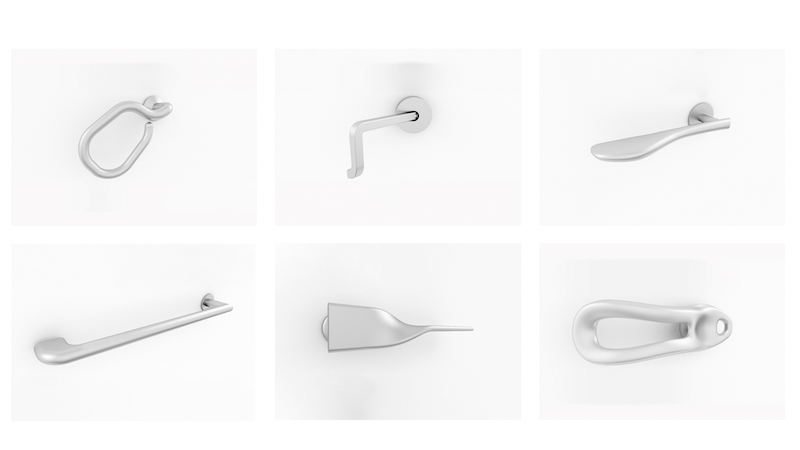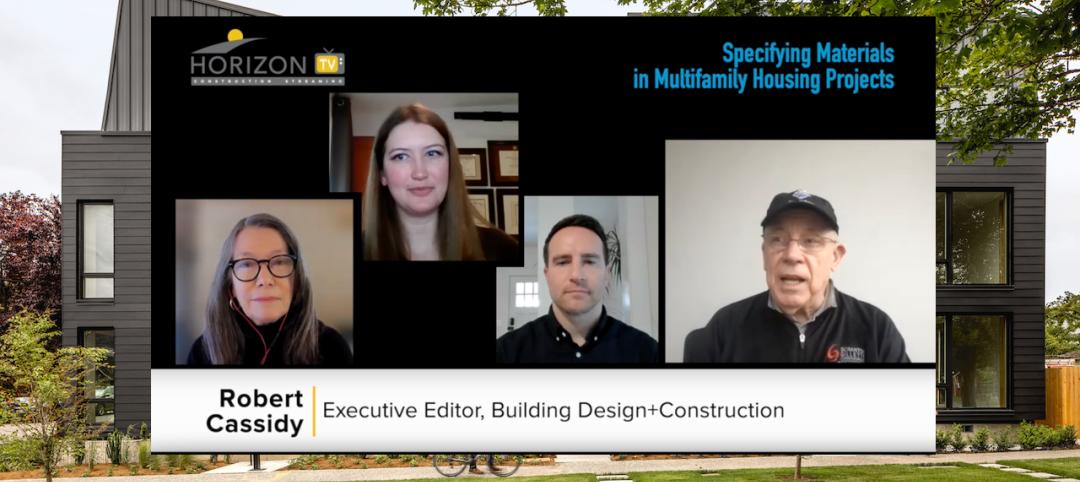Top international design and architecture firm Perkins Eastman recently released its newest white paper, “A Handle on Accessibility: Designing for a Future of Limited Mobility,” co-authored by Associate Michael Schur AIA, LEED AP, and Joshua Bergman, both based in the firm’s Chicago office. The paper marks the culmination of a six-month-long, in-house exercise in which Perkins Eastman’s Chicago staff engaged in various “empathy experiments”—e.g. simulating the tactile and sensory challenges encountered daily by seniors—and then broke off into smaller teams to design and fabricate a diverse array of door handles using 3-D printing technology. By applying a user-centered approach to design, integrating user analysis, and studying the physical constraints associated with aging, “A Handle on Accessibility” from start to finish set out to create a more accessible door handle and develop a clear understanding of the empathetic design process.
There is an accessibility challenge facing the U.S. According to the most recent census data and studies conducted by the U.S. Department of Health and Human Services, an estimated 1 in 5 people will be aged 65 or older by 2040. “These statistics,” say the authors, “suggest that in less than 25 years, nearly a quarter of the U.S. population will be faced with the physical limitations that come with aging: reduction of mobility and dexterity, visual and hearing impairment, bone and muscle weakness, and immune and memory deterioration.” On the front lines of this challenge is the door handle, a ubiquitous product that often gets overlooked, or otherwise tends to be designed with a form-before-function approach.
Following the teams’ empathy experiments, in which participating design and thought leaders formed evaluations based on first-hand limited-mobility and sensory deprivation exercises, solutions for new types of door handles began to materialize. The resulting six prototypes fall into three categories: 1) handles that adapted/evolved traditional handle forms (the “Seed” and “Twist” handles), 2) handles that rethought the handle form (the “Hand Hold” and “Loop” handles), and 3) handles that rethought how doors can be operated (the “Long” and “Crank” handles).
“As the U.S. population continues to age,” write Schur and Bergman, “[we as designers] have the opportunity to advance design through the re-working of overlooked elements of everyday life … The range and variety of the final designs emphasize the power of recognizing others’ needs…these explorations illustrate that the value of what we design ultimately lies in how well we understand the end-user and how well we are able to design for them.”
“A Handle on Accessibility” is available for free download here.
Related Stories
Adaptive Reuse | Jul 27, 2023
Number of U.S. adaptive reuse projects jumps to 122,000 from 77,000
The number of adaptive reuse projects in the pipeline grew to a record 122,000 in 2023 from 77,000 registered last year, according to RentCafe’s annual Adaptive Reuse Report. Of the 122,000 apartments currently undergoing conversion, 45,000 are the result of office repurposing, representing 37% of the total, followed by hotels (23% of future projects).
Multifamily Housing | Jul 13, 2023
Walkable neighborhoods encourage stronger sense of community
Adults who live in walkable neighborhoods are more likely to interact with their neighbors and have a stronger sense of community than people who live in car-dependent communities, according to a report by the Herbert Wertheim School of Public Health and Human Longevity Science at University of California San Diego.
Multifamily Housing | Jun 29, 2023
5 ways to rethink the future of multifamily development and design
The Gensler Research Institute’s investigation into the residential experience indicates a need for fresh perspectives on residential design and development, challenging norms, and raising the bar.
Urban Planning | Jun 15, 2023
Arizona limits housing projects in Phoenix area over groundwater supply concerns
Arizona will no longer grant certifications for new residential developments in Phoenix, it’s largest city, due to concerns over groundwater supply. The announcement indicates that the Phoenix area, currently the nation’s fastest-growing region in terms of population growth, will not be able to sustain its rapid growth because of limited freshwater resources.
Multifamily Housing | Jun 15, 2023
Alliance of Pittsburgh building owners slashes carbon emissions by 45%
The Pittsburgh 2030 District, an alliance of property owners in the Pittsburgh area, says that it has reduced carbon emissions by 44.8% below baseline. Begun in 2012 under the guidance of the Green Building Alliance (GBA), the Pittsburgh 2030 District encompasses more than 86 million sf of space within 556 buildings.
Industry Research | Jun 15, 2023
Exurbs and emerging suburbs having fastest population growth, says Cushman & Wakefield
Recently released county and metro-level population growth data by the U.S. Census Bureau shows that the fastest growing areas are found in exurbs and emerging suburbs.
Multifamily Housing | May 16, 2023
Legislators aim to make office-to-housing conversions easier
Lawmakers around the country are looking for ways to spur conversions of office space to residential use.cSuch projects come with challenges such as inadequate plumbing, not enough exterior-facing windows, and footprints that don’t easily lend themselves to residential use. These conditions raise the cost for developers.
Senior Living Design | May 8, 2023
Seattle senior living community aims to be world’s first to achieve Living Building Challenge designation
Aegis Living Lake Union in Seattle is the world’s first assisted living community designed to meet the rigorous Living Building Challenge certification. Completed in 2022, the Ankrom Moisan-designed, 70,000 sf-building is fully electrified. All commercial dryers, domestic hot water, and kitchen equipment are powered by electricity in lieu of gas, which reduces the facility’s carbon footprint.
Multifamily Housing | Apr 27, 2023
Watch: Specifying materials in multifamily housing projects
A trio of multifamily housing experts discusses trends in materials in their latest developments. Topics include the need to balance aesthetics and durability, the advantages of textured materials, and the benefits of biophilia.
Contractors | Apr 10, 2023
What makes prefabrication work? Factors every construction project should consider
There are many factors requiring careful consideration when determining whether a project is a good fit for prefabrication. JE Dunn’s Brian Burkett breaks down the most important considerations.
















